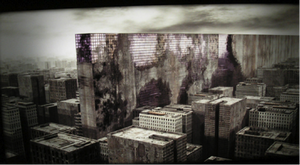
Buenos Aires. Mexico City. Bogotá. Rio de Janeiro. The Virtual City. How does one “read” the contemporary urban metropolis of Latin America, whether real or imagined? Megacities are ever-present in Latin American cultural production, portrayed either through narratives of progress and modernization, or as alienating spaces and apocalyptic ruins. Building on the work of urban cultural studies and literary/film theory, this course examines cultural representations of five major “megalopolis” (four real and one virtual) in cultural works from 1900 until today.
The course examines concepts related to modernization, development, and the rise of mass media; it studies political and socioeconomic shifts in urban areas, including the effects of revolution, dictatorship and urban guerrillas, poverty (favelas and villas miseria), narcotraffic and criminality, and the reclaiming of city space by contemporary social movements. The focus will be on several cultural moments, from the 1920s modernization of these cities, to mass migrations in the 1940s and 50s, political unrest and state violence in the 60s and 70s, and the inequality of the neoliberal present. We will explore the following questions: How are cities and city dwellers represented in poetry, chronicles, novels, films, comic books and digital media? How does urban street culture (graffiti, hip-hop, internet “urban” spaces) interact with high culture? How does race, class and gender map onto city space in these works? We will examine literary and cultural works including Manuel Maples Arce’s poem “Urbe” (1924), Roberto Arlt’s novel El juguete rabioso (1926), Jorge Luis Borges’ short story “El hombre de la esquina rosada” (1927), Mário de Andrade’s crónicas from the 1930s, Ernesto Sábato’s novel El túnel (1948), Octavio Paz’s essays from El laberinto de la soledad (1950), Ruben Fonseca’s short stories from Feliz Ano Novo (1975), Diamela Eltit’s novel Lumpérica (1983) and Fernando Vallejo’s novel La virgen de los sicarios (1994). We will also view several films centered on urban life, including Fritz Lang’s Metropolis (1927), Victor Gaviria’s Rodrigo D: No futuro (1990), Fernando Meirelles’ Cidade de Deus (2002), and Mariano Cohn’s El hombre de al lado (2010). Other genres will include comics such as Carlos Varela’s La herencia del coronel (2008) or Ricardo Barreiro’s Parque Chas (2004). and Paola Power’s Virus Tropical (2011). Finally we will examine "urban" cultural products created for Internet, including cell phone videos and YouTube series. Course in Spanish. Brazilian works read in English or Spanish translation.
3 undergraduate hours. 4 graduate hours. May be repeated to a maximum of 6 undergraduate hours or 8 graduate hours if topic varies. Prerequisite: SPAN 316 and SPAN 326 .